Image Credit: Kohler
Image Credit: Kohler This Hansgrohe Waterfall shower system delivers a variety of wetting patterns, all collectively well more than 2.5 gpm.
Image Credit: Hansgrohe
You would think that establishing a definition for “showerhead” would be simple. But, as the Department of Energy (DOE) is discovering after issuing a draft interpretive rule on the matter, nothing is simple when it comes to getting people wet.
Some showerhead background
Back in early 1994, under the Energy Policy and Conservation Act (EPCA) of 1975, all showerheads manufactured in the U.S. could have a maximum flow no greater than 2.5 gallons per minute (gpm) at 80 psi. The intent, of course, was to save water, particularly hot water and its associated energy use.
Over the years, plumbing manufacturers have gotten pretty creative about how people can get wet in their showers or baths. In recent years, the trend has been toward “multi-spray” systems, which have up to six “showerheads” (each of which complies with the 2.5 gpm flow maximum) and “waterfalls,” which aren’t really “showerheads” and therefore aren’t subject to the requirement (see photos for examples of each). These systems can use up to 20 gallons of water per minute, just for one person. And even though the actual installation number for these DOE-dodging plumbing fixtures is relatively low, they represent an important, high-end product for plumbing manufacturers.
Manufacturers erupt over new ruling
When DOE quietly issued a draft interpretive ruling earlier this year that essentially made these systems illegal, the water world erupted. The ruling said:
1. “…a showerhead is any [emphasis added] plumbing fitting that is designed to direct water onto a bather.”
2. “…the Department will find a showerhead to be noncompliant with EPCA’s maximum water use standard if the showerhead’s standard components, operating in their maximum design flow configuration, taken together, use in excess of 2.5 gpm when flowing at 80 psi, even if each component individually does not exceed 2.5 gpm.”
Bye-bye “multi-spray” and “waterfall” direct-water-to-bather devices.
Water conservation community not happy either
It’s not just the plumbing manufacturers but also the water conservation community and water conservation experts who are upset with the DOE showerhead rule. It all stems from the key word “interpretive”—both camps agree that DOE should have invited them to comment on this “interpretation,” which they say actually represents a rule change.
Here is what DOE says about its action in the draft rule itself:
“This draft interpretative rule represents the Department’s interpretation of its existing regulations and is exempt from the notice and comment requirements of the Administrative Procedure Act. See 5 U.S.C. § 553(b)(A).“
In other words, DOE did not need to treat this rule as a “substantive” rule change, an approach with exacting and lengthy requirements for input from the outside. So plumbing manufacturers and trade industry groups are upset because they consider this change to be more than a little bit substantive and one in which they should have a say (see the trade industry letter to DOE Secretary Chu opposing the interpretive rule affecting multiple showerhead systems).
Water conservationists are upset for the same reason, but from a different side of the issue—they’re quite certain that manufacturers will manage to find loopholes. “This is a substantive change and working out all the definitions and conditions to make sure the language is watertight will take a lot of effort from a lot of folks,” says water expert John Koeller, P.E. “And frankly, lots of hard work has been done on this topic within ASHRAE 189.1 (a code-ready green building standard) and the IAPMO Green Building Supplement, work that is not reflected in the DOE interpretive rule.”
One source within the plumbing industry who asked not to be named said, “I know that DOE is way behind on its rulemaking and is even under a consent decree including this particular rule, but this is not the way to get caught up.”
Rule will harm the elderly? NAHB goes too far
Of course, every rule change brings along a few fear mongerers. I was flabbergasted to get an email press release from the National Association of Home Builders (NAHB) entitled, “DOE Showerhead Rule Limits Choices for Elderly and Disabled, Says NAHB.” The release included this quote from current NAHB President Bob Jones:
“This is going to make it much more difficult for older Americans to live independently. Under the new definition, replacing a traditional, single showerhead with one that includes a flexible hose to take a shower while seated will result in half the water pressure for each—which would be too weak for either one.”
This sort of overstatement undermines NAHB’s credibility and the legitimate concerns the building industry has with the nature of the rule change. I contacted Marsha Mazz, the Technical Assistance Coordinator for the U.S. Access Board, the agency that handles accessibility issues for the federal government. “We don’t see it as a disability issue at all,” stated Mazz. “People with disabilities will not use both showerheads simultaneously and all the combination hand-held/mounted showerheads of which we are aware have a diverter that directs all of the flow to one head or the other.”
NAHB’s e-release (and the NAHB letter to DOE regarding the rule, supplied by NAHB to BuildingGreen) goes on to express the same legitimate concerns expressed in the trade letter above. NAHB should have stuck to that line; the unfortunate title and quote lands them squarely under a compliant showerhead, fully dressed.
A bit of good news on WaterSense
Meanwhile, the U.S. Environmental Protection Agency’s (EPA’s) WaterSense¯ program is merrily proceeding on its way to market its WaterSense labeled product and new homes, using its specification for water-efficient showerheads and shower compartments—a specification achieved by consensus. And it is not luck but hard and intelligent work that resulted in specification language that holds water and aligns well with the DOE draft rule, ASHRAE 189.1, and the IAPMO Green Building Supplement.
Weekly Newsletter
Get building science and energy efficiency advice, plus special offers, in your inbox.

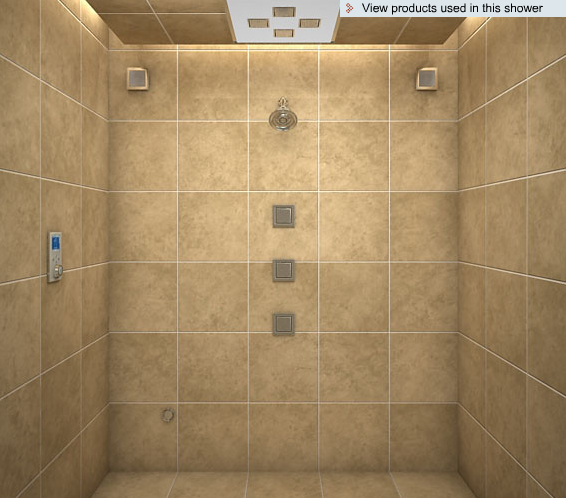




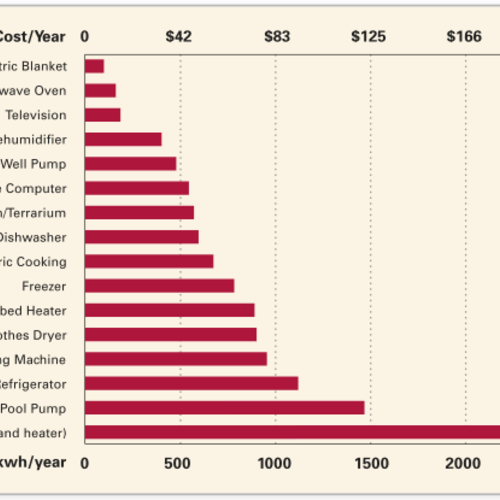
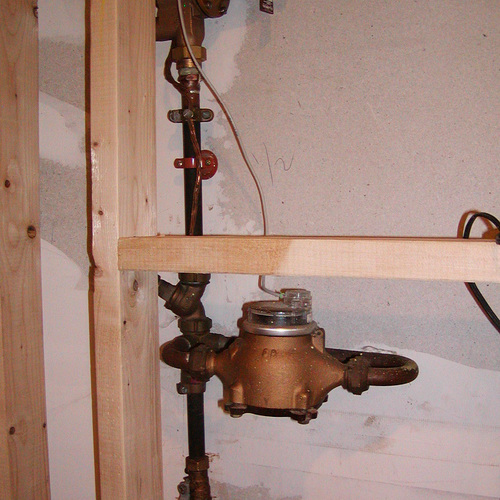
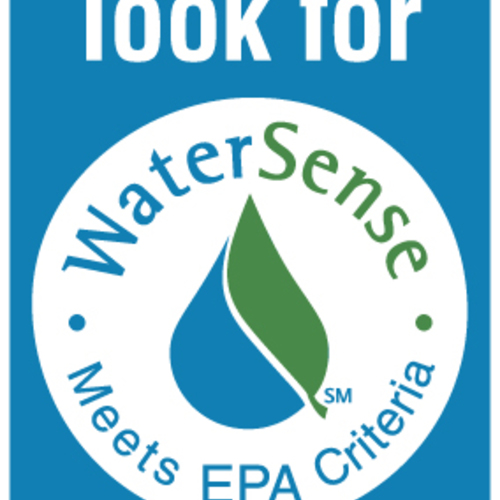

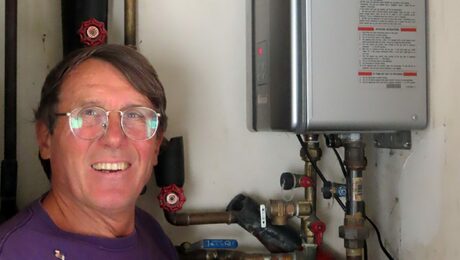

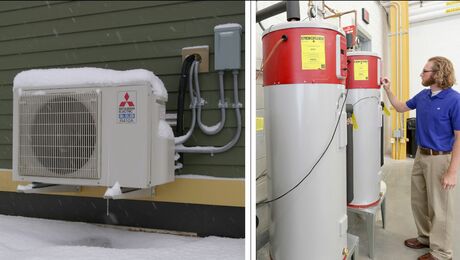

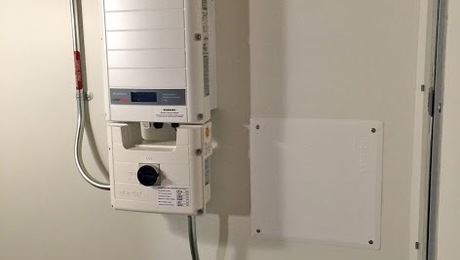

23 Comments
Showerhead Shambles
Surely all that is required is that the control valve should be unable to pass more than a specific flow at a specific pressure. This renders the number and type(s) of outlets moot.
All that is required
Oh that it were so. For instance, the spigot for a tub can have a much higher flow rate than 2.5 gpm because people want to fill their tub in a reasonable amount of time. Move that "spigot" 6.5 feet or so up the tub surround, and you have a "waterfall." Is that "waterfall" for filling the tub? So, the language of the rule needs to very exacting for what constitutes one shower head and one shower compartment, or circumventing the ruling can and will be accomplished.
Circumventing the ruling
"circumventing the ruling can and will be accomplished" says it all...
It is never going to be possible to prevent people using the control valve for a bath to feed a showerhead. All you can do is make it as difficult as possible and mandate that control valves for showers have the appropriate relationship between flow and pressure.
Mandating that the control valve for a bath must be integral with the spout would make it less attractive to move it 6.5 feet or so above the tub surround...
Of course, all this interferes with the consumers' God-given right to do as they please. If you really want to reduce water useage by any given section of society simply charge them for water at the rate which will achieve the desired useage. The taxes raised by this can help to pay for the lawsuits.
Response to Interested
Interested,
You have a good point about charging more for water. That move would first affect the big users: farmers who irrigate heavily, industrial users, and homeowners with big swimming pools and extensive irrigation systems.
Such a pricing system (if it were strictly a per-gallon charge, without discounts for volume users) would certainly clarify the issue -- and would reveal that baths and showers are a minor part of our water crisis.
Water Policy and Pricing
Stay tuned--Alex and I will be doing a blog soon on water policy and pricing, a big picture view on water. Water pricing and the real costs of water are just plain wacky in most cases. And from a residential use perspective, addressing the hook-up fee and the per gallon charge is an interesting phenomenon. More soon!
just plain wacky
One of the interesting side effects of our recent droughts in the Southeast has been that increased water conservation has led to budget shortfalls for local water departments causing them to raise the price per gallon for water. Customers are feeling betrayed in that SOME of them made an effort to save water and now everybody is facing higher charges.
Martin correctly points out that baths and showers are not the culprit on water usage. Leaks and irrigation do the bulk of that damage. Charging higher rates overall and especially for outdoor water usage would give people real incentive to conserve where it matters or drill irrigation wells / invest in rainwater harvesting.
I'd love to see wider adoption of (amazingly in-expensive) rain gardens. On the five-certifications house profiled here at GBA we put in a 20' x 4' and a 10' x 10' rain garden for $156 each! These are great value and can also be used as pre-filters for pressurized rainwater harvesting systems which aren't cheap @ $1.00 to $1.50 per gallon storage capacity for 2,000 to 4,000 gallon systems.
As far as hook-up fees go, well a nice dinner and good bottle of wine always worked for me.
Yes, but...
I completely agree with the comments about water pricing and addressing leakage. But, these things will take years to "fix". Meanwhile the question remains - should we continue to allow people to shower with several showerheads when one will do the job? The funny thing about all of this is that there is nothing in the rule that would prevent someone from installing several WaterSense showerheads in a single shower. The DOE rule only addresses factory assembled devices.
Rules and laws should always
Rules and laws should always be specific so as to reduce the "gray area" situations. Industry will always lobby against a rule that is vague and this one is in many instances. Pricing water according to usage and flow is a good idea and will make many think in regards to waste. But for those that can afford to waste it fails to promote conservation. I am a licensed building official and builder in Connecticut. I believe that the building codes should address these situations and if that means limiting the amount of shower heads in a shower than so be it. We have proven as a society that we are wasteful and selfish when it comes to conservation of any of our natural resources. Water is our biggest issue currently because all life forms need it to survive, sources are becoming scarce, we have polluted many of the aquifers, and the changing climate is causing more drought situations. As we currently witness the disaster in the Gulf , it should make sense that we have a well thought out plan to deal with our decreasing water supply, and that we do not wait until it is too late and just react. That is exactly the situation that our increasing oil addiction has brought upon us. If law is needed to dictate how we conserve our resources than they need to be clear and concise whether they relate to buildings and housing, industry standards, or personal lifestyle issues. Nobody needs six shower heads operating together whether low-flow or not. That is an attitude adjustment problem.
Great article - Rain garden
Peter, Great Article (and string of comments). I look forward to your follow-up with Alex. Michael, were your rain gardens site-designed and fabricated or were they part of a pre-packaged system that one can purchase?
Penalised for Saving Water
Hi Michael,
I'm surprised that customers in the SE had not realised that reducing their water usage would not reduce their bills. The water companies do not pay for the water - they pay for the infrastructure to collect, treat and deliver it. The costs of doing this have not fallen but the amount of water they have to supply has. So the price per gallon goes up.
Get ready for exactly the same result in other similar fields - particularly energy. Saving energy will reduce your bills for a while (since others are still wasting energy) but in the longer term the bills will return to where they were. There should be savings down the line in that the infrastructure will not need to be expanded at the rate it is now but maintaining the required infrastructure will still dominate costs. Also, renewable energy infrastructure has to be more costly than the current methods - because if it were not then it would be the current method....
From a financial point of view it is therefore sensible to reduce your own usage of resources while not encouraging other to do so. Environmentally, of course, that would be a recipe for disaster.
One more thing
Let's not forget that saving water (and energy) ensures that there will be enough to go around in the future. We've come to expect that faucets will always dispense water and outlets will always be live. Plus, readily available water can allow for business development. Many agricultural and industrial projects (think jobs here) rely on sufficient water supplies. If your community doesn't have it, they'll have no choice but to go elsewhere.
WaterSense Partner of the Year
Wait a minute - wasn't Kohler the WaterSense Partner of the Year for two years in a row?
Disincentives can work better than prohibitions
I think there's an easy solution: Rather than prohibiting shower systems that use more than 2.5 gpm, allow them but require that any such system be accompanied by a notice, permanently affixed, in minimum 72-point type, NOTICE: This shower system delivers more than 2.5 gallons per minute. Long term use of such systems may lead to environmental degradation. Removing, obscuring or defacing this notice is unlawful, and may lead to fine and/or imprisonment.
It's all just whipped cream on a turd
I happen to live in a place where we water our lawns with potable water. I'm sure some of you live in places that do the same. It seems kinda silly to worry about these ridiculously small conservation methods when we a so overly unconcerned about the big ones. I can't take a good strong shower without breaking the law, but I can dump 1200 gallons a night onto my lawn without a problem. It's like have a law banning hood ornaments on Corvettes to save fuel. If it's about heating the water, then we should be talking about waste water heat reclaimation. If it's about saving water we should talk about the BIG users like irrigation and cooling towers and such.
All this does is make people feel like they are actually doing something. In reality, we aren't willing to do the "hard" things that can actually solve our problems, and all of these annoying little things like shower heads are just like whipped cream on a turd.
Great article. It's nice to
Great article. It's nice to see that DOE is finally attempting to deal with the multi-head shower systems that so many large homes have installed. But as others above have already pointed out, what really needs to happen is a major cultural shift in which people wouldn't even consider installing something as wasteful as that in the first place.
DIY Home owner
When one is aware of the DOE rule, it is easy to circumvent. Buy that which is not made in the USA. With a 2.5 gallons per minute water flow at 80 psi, one can get a good shower that makes the wife happy. But what can one do to get a good shower and have happiness when there is only 20 to 40 psi of water pressure and you have unknowingly installed one of these USA made flow control valves that meets the DOE rule. Wait for city water. No chance. I will sometime have to ripe out the newly installed wall to replace the valve. After becoming aware of the DOE rule, the second shower renovation utilized a foreign made valve that provides a good shower at maybe a little more than a 2.5 water flow and 20 psi water pressure.
hot water
Is not he rational for low flow fixtures the conservation of energy used to heat water? Then comparisons of water use for bathing and irrigation are moot, since irrigation water is not heated. It seems that taxing energy would be a more rational policy than increasing water rates.
Increase the price of water
Consumers should be free to choose whatever fixture they desire; it is the price of water that should be increased to reduce aggregate demand. It's so much easier that way, and puts the choice back into the hands of the consumer. The public policy is made though price, not by minute regulation on thousands of items. The same effect ALWAYS happens with gasoline demand when we change from winter to summer formulations regionally ... the price at the pump zooms because of supply constraints, and suddenly people drive less. So, instead of regualting the MPG CAFE standards, government should levy a gas tax. More efficient by far. Same with shower heads and mixing values. Let the consumer decide based on the price of water.
1984 all over again
Big brother in the shower?
One interesting way of circumvention, is to allow 'filling a tub' with water, and pump/filter/recirculate the same water, possibly with an 'instant hot water heater' in line to keep water at the temperature desired.
At the end of the shower, allow it to drain (at 2.5gpm max).
How would the proposed rules relate to this?
Yes it would be an 'expensive solution', but it fits the letter of the law, because the 'new clean' water only fills at 2.5GPM with 'new fresh water', and the rest is 'recycled', or is the use of 'recycled water' regulated as well.
Such regulations are unreasonable, since they don't state what the problem that they are trying to solve is, they are regulating a prescribed solution, and not requiring abatement of the 'root cause' consideration. ... Big Brother was wrong in 1984, and is wrong now.
Price of fuel vs use
I agree that mandated CAFE standards system does 'help', but if I remember right, back in the 1950's we had 2 Ton cars that got near 30MPG before regulation was mandated (clean air was the mantra in the '60s if I remember right), so 15MPG was then considered acceptable. So it has been 50 years to get smaller cars (roughly 1 Ton) back to being 'near' the 30MPG mark. Yes, the air is cleaner in some places.
In California in recent times during drought, the enforced requirements to conserve was taken to heart by the public. Then the water suppliers determined on the 'surprise' of reduced revenue they had to significantly increase the price of water, because with a given infrastructure, whether it is needed or not it takes a given number of $$ to provide service, no matter the flow.
Does government regulation work? Not in my book. Figure out how to not give sweetheart deals to various industries, determine that removing dams might not be all some folks think it is, but redesigning the reservoir systems might help. In new structures, design in rainwater and gray water systems, etc etc.
IMHO, the overall desire of the regulations is to reduce domestic water usage, and to some extent power (for hot water) use. So addressing these as the root desire, by x gallons per day per designed occupant. ADA prescribed occupancy should be alloted a bit more, and a few other 'exceptions', but the gray and catchment water should not be considered as part of the 'problem' they should be allowed 'extra use' for free under the regulations, and not regulated the same way as 'domestic fresh' water.
Using domestic fresh water to water lawns, and even wash cars personally seems to be 'wasteful'. Even commercial car washes recycle their water significantly. There is no reason we should not do the same for 'domestic agriculture' (yards and gardens), and 'non-personal cleaning' (washing cars, houses, etc)
What do you think?
water conservation.
I lived in california when the drought mandated reduced usage. and as stated before the rates went up. Our bill ended up the same as before. In some states in the west it is illegal to collect rain water. The state claims ownership of any water that is not naturally absorbed into the ground. We were charged so much per acre for each crop we grew for water we pumped out of wells on our property. When you raise the prices of growing and processing crops to the point it is not profitable we stop growing them and it moves to other countries where THEY DO NOT Have the same regulations on food safety and chemical use. Have you really accomplished your goal ? A very small amount of imported food is tested for compliance.
water water every where and not a drop to shower with...
are you kidding me, really, are you all nuts. you have already wasted way too much time infringing on my right to buy and use water any way i wish, get a life
Go back to tubs only
One thing that is missed by all posts is the fact that showers are much more efficient than tubs. We used to be a bathing country before WWII. After the boys came back home used to showers, the SOT became the norm. Now we have showers with all sorts of goodies. Bottom line is that a shower with four outlets hitting you for 5 min is still using less water than filling a tub, getting in, and taking a bath.
Toilets are more efficient, showers are more efficient, appliances that use water (dishwashers and wash machines) are more efficient. Why do we need to do more? Can't we have a little fun once in a while?
Log in or create an account to post a comment.
Sign up Log in